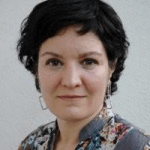Nature-based solutions and remote sensing to recover degraded land with NewLife4Drylands
The European NewLife4Drylands project aims to apply nature-based solutions (NBS) to restore degraded and desertified lands, using remote sensing data and models. From CREAF we contribute with the experience of two research teams: the Protecsòls group, for the restoration of degraded landscapes, and the Grumets group, for environmental remote sensing.
The CREAF research team involved in NewLife4Drylands is made up of Joan Masó, Vicenç Carabassa and Cristina Domingo, as part of a consortium coordinated by the National Research Council of Italy - Institute of Atmospheric Pollution Research (CNR-IIA) and in collaboration with the Hellenic Society for the Protection of Nature, the University of Crete, the Italian Institute for Environmental Protection and Research (ISPRA), the Sapienza University of Rome and the Institute of Bioeconomy of the CNR (CNR-IBE).
The main objective of this initiative that will last 2 and a half years is to define a protocol to identify, intervene and monitor degraded lands. "Combining the experience of the research groups Protecsol, specialized in restoration of degraded spaces, and Grumets, dedicated to environmental remote sensing, is one of the values that CREAF contributes", explains Joan Masó. In addition to that, Vicenç Carabassa explains that "one of the keys to the project is to study the efficacy of the Cocoon method from space, to monitor the restoration projects carried out in Catalonia and in the Canary Islands as part of the LIFE The Green project Link".
Six study areas have been identified to test and evaluate the proposed protocol, located in arid and semi-arid Mediterranean areas and in coastal ecosystems threatened by climate change. In Spain, the study areas have been part of the LIFE The Green Link project that CREAF has coordinated in Bruc (Catalonia), Tifaracás (Gran Canaria), Alta Murgia (Puglia, Italy), the mountains of Asterousia (Crete , Greece), the Nestos delta (Greece) and the Bosco di Palo Laziale (Rome, Italy). These last two areas are part of the LIFE Primedia initiative, coordinated by the Hellenic Society for the Protection of Nature.







